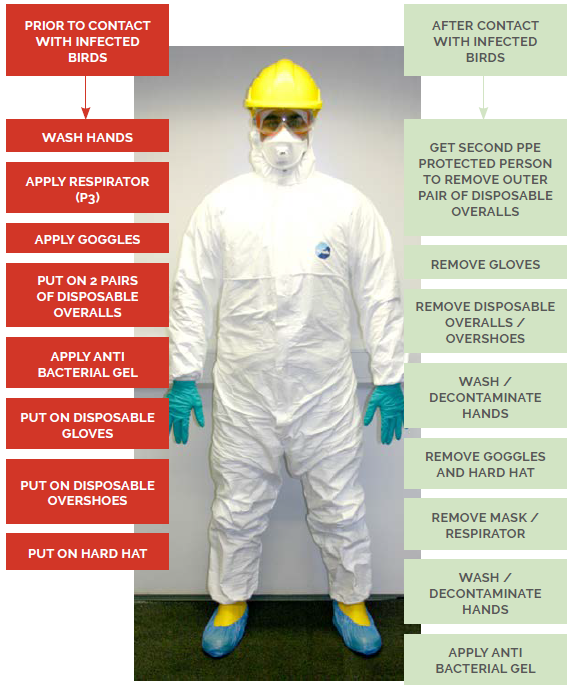Case Study 17
Protecting Workers Dealing with Avian Influenza Outbreak
In response to the unprecedented 2021 – 2022 outbreak of the highly pathogenic H5N1 avian influenza (AI) in England and Wales, culled birds from infected poultry farms were safely transported and disposed of at several rendering plants across England.
The health protection authorities worked with several rendering companies to coordinate the culls in the poultry sheds with transport of the carcasses to the rendering sites for disposal, such as at Advanced Proteins in Cheddleton, Staffordshire, i.e. “from Shed to Chedd”.
In AI outbreaks such as this the culls are undertaken by the health authorities and the carcasses are securely transported to the rendering sites in accordance with rules of the authorities. Local incident management teams mounted a comprehensive response geared at preventing transmission to humans involved in the culling, transport and rendering process.
“Systems and procedures have evolved with experience over the years in dealing with AI outbreaks and has led to a refined approach to risk assessment for rendering workers based on their occupational role.”
The rendering processes are highly automated and provide a “closed” safe system. There is no direct handling of carcasses which are tipped directly from the covered reception area into the rendering line and there is no liquid effluent or waste released into the environment.
At Cheddleton, over 70 personnel were identified as being a part of the disease control operation and risk assessments were undertaken using the health authority guidance to ensure they were safe. The staff involved included:
-
Truck drivers
-
Maintenance / electrical team
-
Process operatives
-
Floor managers
-
Animal welfare staff on site
The precautionary safety measures implemented included:
-
Personal Protective Equipment (PPE)
-
Interview, gain consent, provide verbal and written information
-
Antiviral chemoprophylaxis (Oseltamivir)
-
Seasonal influenza vaccination (mobilisation of primary care team to undertake vaccination clinics at the plant)
-
Health status monitoring for 14 days post last potential exposure
Hospital admission procedure agreement with local acute trust (precautionary) -
Serological investigation
The outbreak attracted considerable national interest and the multi-agency local health protection response was timely and robust in achieving immediate and sustainable use of PPE and antiviral prophylaxis for all with potential exposure.
There was a high uptake of seasonal influenza vaccination and it was reassuring to note that the local health community was able to rapidly deploy a multi-agency health protection team and provide substantial surge capacity.
Systems and procedures have evolved with experience over the years in dealing with AI outbreaks and has led to a refined approach to risk assessment for rendering workers based on their occupational role.
Case Study 17 - Version 1, October 2023
